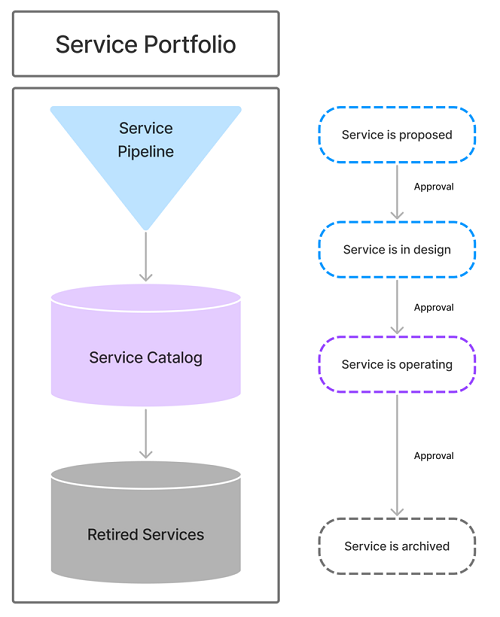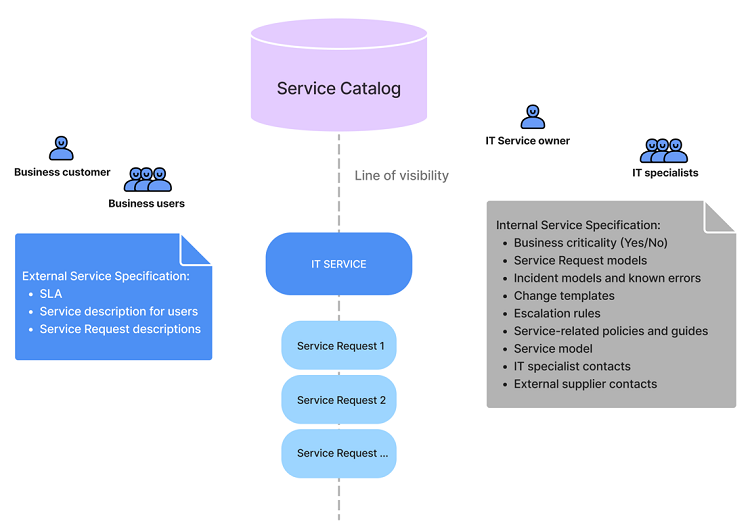Service Portfolio Management
A service is defined as a means of enabling value co-creation by facilitating outcomes that customers want to achieve without having to manage specific costs and risks.
For information on how to create a new service, activate or deactivate an existing service, see Services.
The purpose of the ITSM process is to provide maximum business value by offering an optimal set of IT services. The process controls the entire lifecycle of an IT service and is a key element in building a service relationship between a business and an IT service provider. The ITSM process consists of several sub-processes that operate at different levels of interaction between the business and the IT service provider:
- Service Portfolio Management – strategical level.
- Service Level Management – tactical level.
- Service Catalog Management – operational level (business as usual).
Service Portfolio Management is the key process for providing relevant and accurate information regarding services. All services are stored in the core repository named Service Portfolio divided into three parts:
- Service Pipeline contains services that are new or inactive. They may be just proposed or under development.
- Service Catalog contains active services offered to customers; this is the only part visible to them.
- Retired Services contains inactive services that are no longer needed for business operation.
The following diagram illustrates the lifecycle of IT services in the Service Portfolio.
In SimpleOne, services are used in all ITSM practices, so every ITSM object is linked to a service. In fact, a service is a core element of the ITSM Solution.
Services are used in Knowledge Management to classify the articles in the Knowledge Base. As a Service Knowledge Management System (SKMS), SimpleOne uses services to relate the Knowledge Base (KB) articles to the end-user needs. The KB articles can be related to external and internal service specifications within a particular service, which is done with the help of content item classes.
The following illustration shows an example of possible articles included in a service specification, while the actual contents of the documents are determined by the customer and their needs. The line of visibility demonstrates that the business customer and business users only see everything up to this line, while the IT service owner and IT specialists see everything shown in the illustration.

